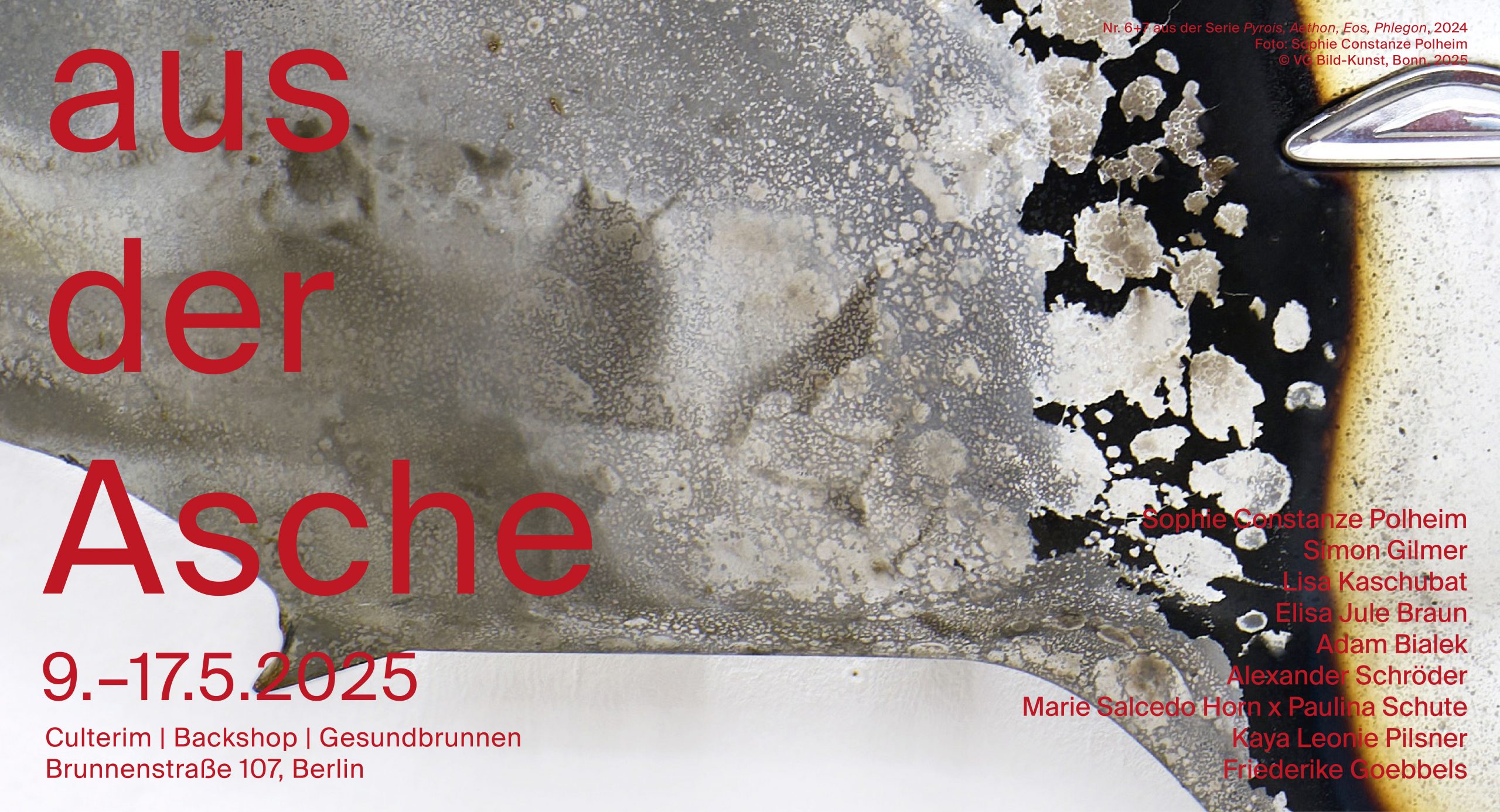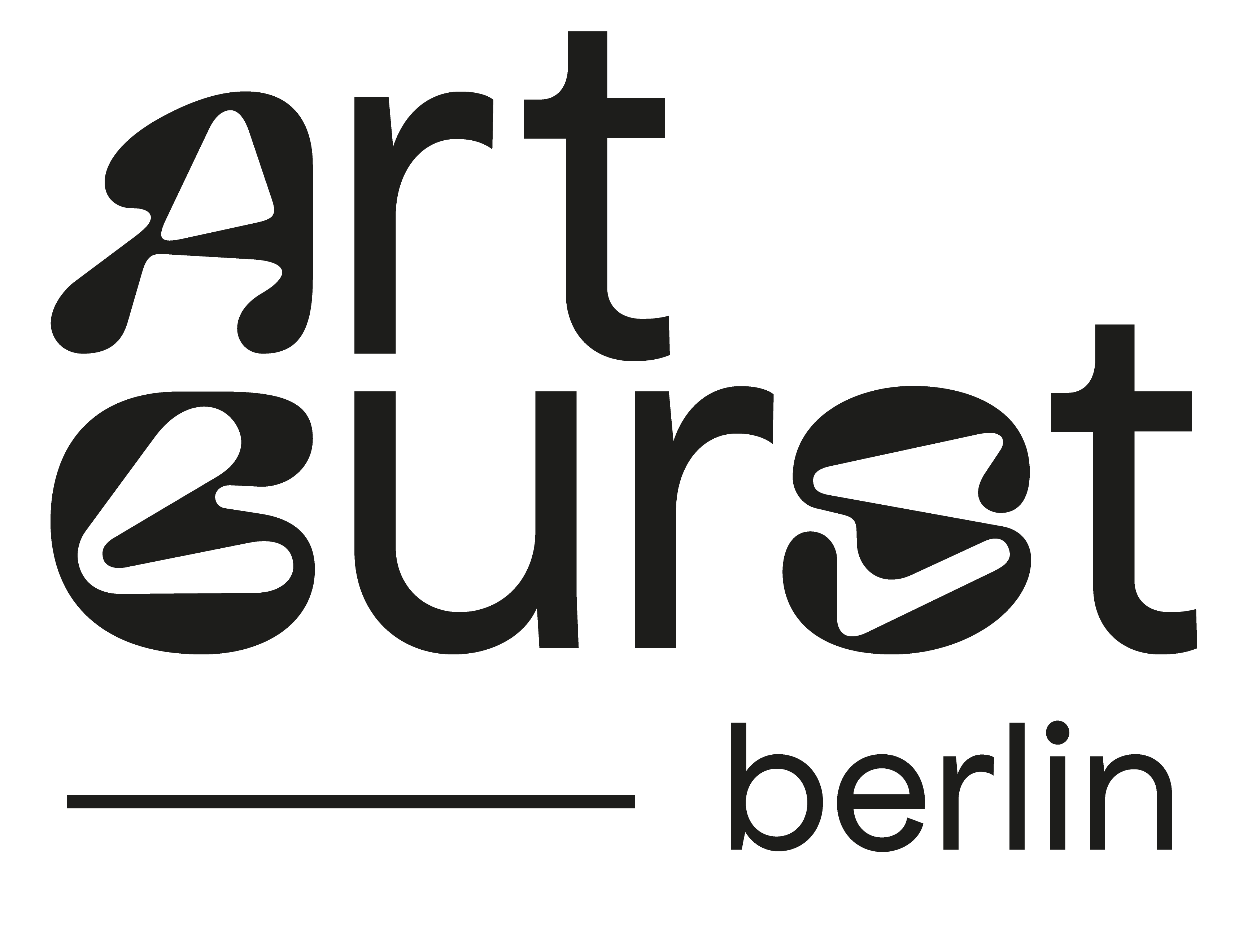
Location
Culterim | Backshop | Gesundbrunnen
Brunnenstraße 107, 13355 Berlin
Date
09. – 17. May 2025
Program
Opening hours : 12 – 7 p.m.
Opening 09.05. from 7 p.m.
Music with DISCO VELOCE [Curieux Dilettanti]
Artists
Adam Bialek
Alexander Schröder
Elisa Jule Braun
Friederike Goebbels
Kaya Leonie Pilsner
Lisa Kaschubat
Marie Salcedo Horn x Paulina Schute
Simon Gilmer
Sophie Constanze Polheim
With ‘aus der Asche’, artburst berlin e.V. presents the second part of the double exhibition on the subject of heat. While the first part of the exhibition ‘brennen glühen flirren’ (2 – 6 October 2024, Galerie erstererster Berlin) focused on the causes and manifestations of heat, this second part of the exhibition is dedicated to the global consequences and how humans deal with them. The group exhibition brings together polyphonic artistic positions that visualise the effects of global warming and the exploitation of resources in different ways – sometimes subtle and poetic, sometimes direct and confrontational.
In his series ‘Der lange Abschied’ (eng. ‘The Long Goodbye’), Alexander Schröder documents the visual ambivalence of a changing landscape: dystopian glowing cooling towers, abandoned craters and peaceful swans in the fog merge into images of a delicate eeriness. In ‘It's like water everywhere’, Marie Salcedo Horn/b> and human geographer Paulina Schute examine the threat posed to Berlin's groundwater protection areas by industrial projects such as Tesla's gigafactory – a documentary-artistic approach to the vulnerability of urban ecosystems. Simon Gilmer brings a paradoxical game into the exhibition setting with his deceptively real cardboard models of air conditioning systems: what cools, produces heat at the same time – a symbol of the contradiction between individual comfort and collective global warming. Sophie Constanze Polheim takes up myths of fire as punishment and transfers them to the present. Her installation of burnt car parts refers to protest actions and reveals how closely destruction and symbolism can be interwoven.
Friederike Goebbels uses fire blankets as image carriers: she uses screen printing to capture the gradual changes in our climate over decades – a quiet but haunting archive of change. In Lisa Kaschubat's work ‘Burn Out’, physical sculpture and digital expansion merge into a double experience of excessive demands. Her Plexiglas works are characterised by fire - virtually supplemented by AR elements that refer to personal and global exhaustion. Elisa Jule Braun's 3D-animated video installation allows future creatures to explore alternative habitats. The evolutionary questions she raises on the basis of the domesticated horse strike at the heart of a debate about control, adaptation and coexistence. Adam Bialek explores humanity's connection to the sun as a source of life, energy, and culture. The light sculpture, made from biopolymer materials, raises the question of whether such artifacts reconnect us with the primal energies of life or further alienate us, calling for a synthesis of environment and innovation. Finally, Kaya Leonie Pilsner creates delicate mushroom sculptures from porcelain and polylactide fibres – inspired by tinder fungus. Her work thematises decomposition and transformation under the influence of technological influences and ecological instability.
The exhibition ‘aus der Asche’ is an invitation to engage with the global effects of global warming and the traces left behind by human activity. The artistic positions shed light on ecological destruction, resource consumption and adaptation strategies in a changing world – partly documentary, partly symbolic, partly speculative. Many works show the tension between apparent normality and a latent state of crisis, between control and loss of control, between personal concern and a global dimension. The question always arises: What happens when the old burns – and how do we deal with what remains?
